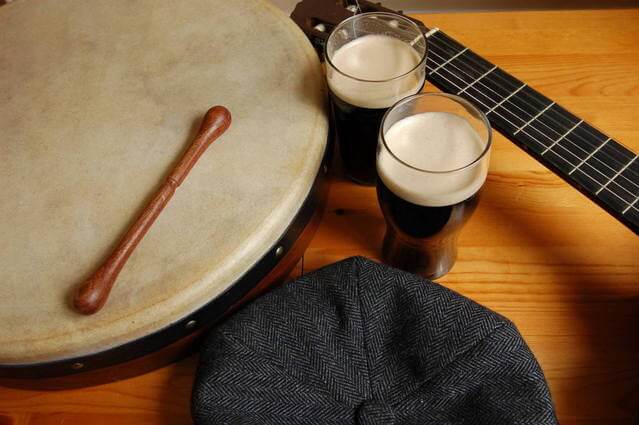
FreeImages.com/Briongloid
Welcome to March! With St. Patrick’s Day coming up in a few weeks, we at Waterlily Weddings thought it’d be fun to go through some notes and separate the fact from fiction on what’s Irish and what’s not. Many pubs in Ireland (and in America) have what are called “quiz nights” — one night a week, usually a week day, patrons are invited to enjoy some food and drink and partake in a fun trivia quiz. With St Patrick’s Day coming up, we thought it best to bone up on your Irish knowledge, and test your wits against history, legend, and some common misconceptions. It’s a fun way to get to know a bit about your host country for your destination wedding, so pass it along to your guests and pull up a chair. Let’s get started!
ST. PATRICK: Born and raised in Ireland, this patron saint has been inspiring raucous parties throughout Ireland on March 17th every year since his death.
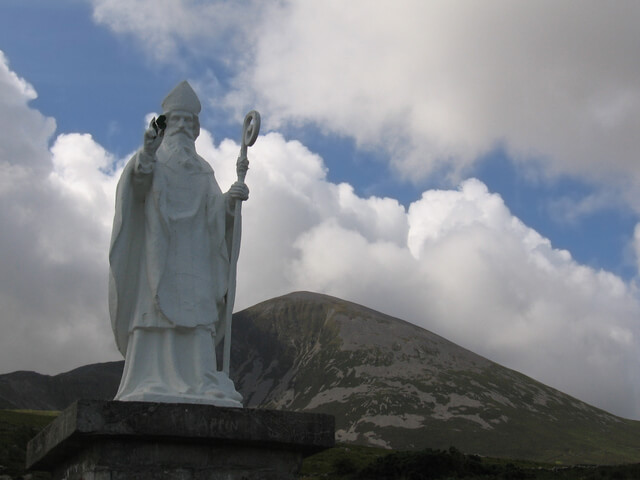
FreeImages.com/Lies Meirlaen
FALSE
Saint Patrick was in fact a Roman by birth. Hailing from the 5th century Romano-British lands of modern-day Wales, Patricius was captured by Irish pirates at the age of 16 and brought to Ireland where he was enslaved. Working mostly with animals, Patrick was converted to Christianity during his enslavement period and 6 years later, fled back to his homeland in Britain. He continued his studies in Christianity in Roman Britain, eventually returning to Ireland where he began his conversion of pagan Ireland. Appealing to everyone from the slaves to the sons of kings, Patricius was successful in converting the pagan Celts and baptizing new converts of all ages. He traveled throughout the island, often accompanied by the sons and soldiers of converted kings themselves as protection, eventually parlaying his success into becoming bishop. Using a 3-leaved clover flower to illustrated the concept of the Holy Trinity, the image of the shamrock became synonymous with Patricius. He died on March 17th, and was later canonized as a saint by the Catholic church some 200 years later. His feast day is celebrated today on March 17th by many Christian religions, the symbol of a shamrock worn traditionally on this day in remembrance of him.
Although a hugely popular drinking day in America, in Ireland St Patrick’s Day is actually very solemn. The Irish celebrate this day by going to church. They don’t dress head to toe in green or wearing leprechaun hats, but rather wear a simple shamrock pinned to the lapel in remembrance. The service is often followed by a gathering at home or the local pub for some drinks, and perhaps a smaller local parade. In Dublin, a larger, more festive parade and celebration has taken place in recent years more so as a response to the Americanization of the “holiday.” But today, among the Irish, the day of St Patrick is more about remembering a turning point in Irish history where pagan Ireland became decidedly Christianized, providing the foundation for their Catholic heritage today.
THE POTATO: One of the traditional food items in Irish cuisine is the humble (but delicious) Potato.
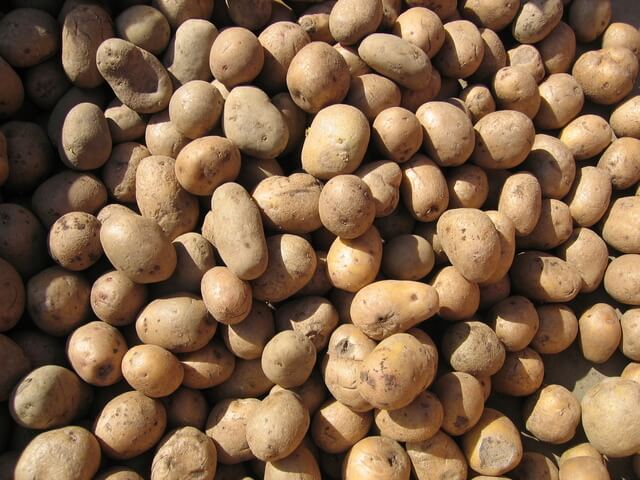
FreeImagies.com/Michael & Christa Richert
FALSE
The potato is actually a native of South America! Cultivated by the indigenous peoples of Peru and Bolivia, the potato was a main food staple since before 5000 B.C. After the Spanish conquest of South America, explorers brought back the potato to Europe, where it was met with distrust and confusion by Europeans. Sir Walter Raleigh famously brought back a purple potato to Queen Elizabeth I. It was adopted as a crop throughout Europe, but it took longer than expected for the tuber to take root (see what I did there?) in European soil. Original varieties brought from South America were finicky at best, subject to many fungal diseases and many gave up on the potato until a couple of varieties started to be successful. The affordability of planting and ease of harvesting made the potato a popular crop to grow in Ireland eventually, becoming a main staple food for the Irish by the early 1800s. The inability to grow a variety of potato type in Ireland eventually led the crop to be susceptible to disease, a fungus taking over and destroying a great number of potato crops throughout all of Ireland. This is known as The Great Potato Famine (or simply, “the blight”). The Irish people’s reliance on the potato (especially among the poorer people) led to an estimated 1 million people dying of starvation (another million would emigrate to escape disease and starvation and the political climate at the time). So whereas the potato may not be authentically Irish, it did play a unprecedented role in a major part of Irish history.
So what is authentically Irish? Salmon and trout have been eaten in Ireland far longer than the potato. The Irish make the best smoked salmon in the world. Wild game like boar and venison have long been roasted and eaten throughout Ireland since the time of the Celts. Black and white pudding, various sausages, bacon and cabbage, yeasty breads and soda breads, oatmeal and apple cakes have been in traditional Irish cuisine far longer than any potato dish. So even though you may want to incorporated a boxty or colecannon into your meal, a truly authentic Irish dish would be a pot of piping lamb stew and slice of soda bread with good Irish butter! Ironically American staple food today, the potato chip, was invented by Irishman Joseph Murphy in 1947.
THE BLARNEY STONE: The Blarney Stone is an enchanting Irish stone that gives one who kisses it the “gift of gab.”
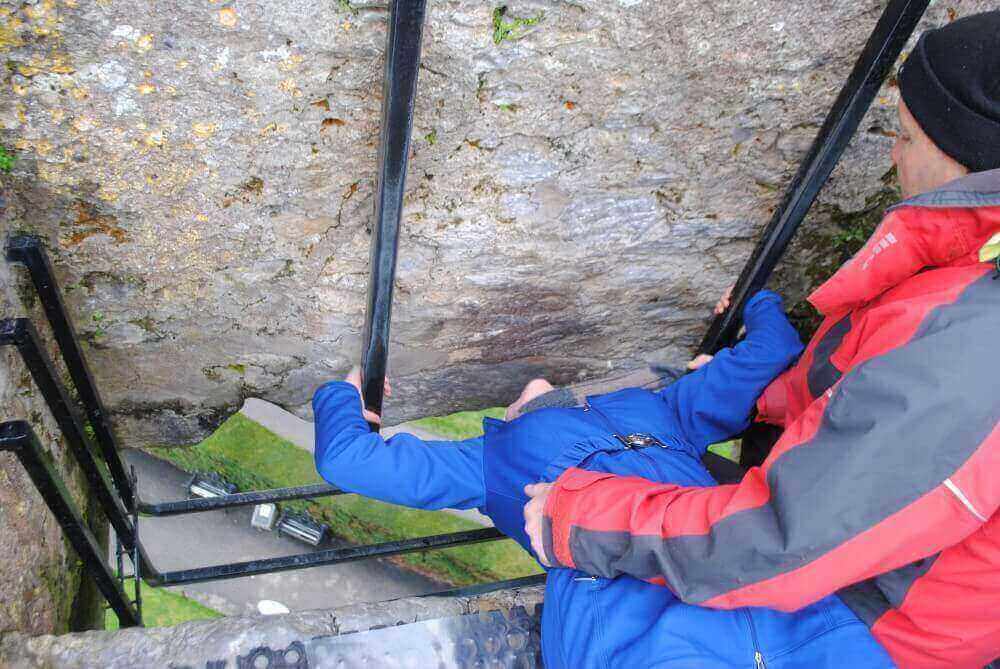
Michelle Escobar
TRUE. Well, sort of. And it depends on who you ask….
As legend goes, the builder of Blarney Castle, Cormac Laidir McCarthy, was concerned about a dispute and appealed to Cliodhana (a goddess) for help. She told him to kiss the first stone he found in the morning on his way to court. He woke the next morning, kissed the first stone he saw as instructed, then went to court where he plead his case very convincingly, and won. In appreciation, Cormac took the stone and built it into the great castle. As the story was told, any who came to visit the castle would ask to see the stone, hoping a kiss would also grant them the gift of eloquence in speech.
Yet another story asserts that the stone was taken during the Crusades and brought back to Ireland. Claimed to be the Stone of Ezel behind which David hid on Jonathan’s advice when he fled from his enemy, Saul. A few claim it was the stone that gushed water when struck by Moses.
Another says it was a stone taken from Stonehenge, in reverence to the pagan Celtic roots of the Irish people.
Some believe the stone is Scottish, not Irish. Some believe it is a piece taken from the Stone of Scone, a large stone used in the coronation of Scottish and English monarchs for hundreds of years. Yet another version says the stone was a gift from Robert the Bruce, the king of Scots, to Cormac McCarthy (the king of Munster) as a thanks for his sending of men to fight on the Scottish side to help defeat the English at the Battle of Bannockburn in 1314.
In 2014, geologists conducted tests on the stone itself, and concluded that this infamous stone of Irish history and folklore was in fact a 330 million-year-old limestone that came from southern Ireland, settling for once and for all that it is indeed an Irish stone in origin. Is it magical? Well, one can persuasively argue the fact that if a single stone can continue to motivate millions of people to lie on their backs, bend over backwards and slide over a gaping hole 5 stories high to reach to kiss a stone built into a 700 year old castle ruin, it has to have some sort of enchanting powers about it.
THE BELLS OF IRELAND: The Bells of Ireland are a traditional Irish flower.
FALSE
Despite the misleading name, the Bells of Ireland flower is not Irish in any way. In fact, it’s native to Turkey, Syria, and the Caucus region. In the Victorian era, it was popular to give flowers and plants nicknames and symbolism (for example, the yellow rose is considered a sign of friendship whereas a red rose a symbol for everlasting love). Molucella laevis was thus coined “the Bells of Ireland,” after its bright lime-green hue reminiscent of an Irish pasture and bell-shaped petals. The symbolism attached is that of good fortune, a nod to the “luck of the Irish” and wishes for prosperity. They are a popular flower used in wedding arrangements today around the world for this, including Ireland. But is not considered the traditional flower of Ireland. That honor goes to the humble shamrock.
LEPRECHAUNS: Leprechauns, rainbows and pots of gold is an Irish legend delighting children and adults alike for years.
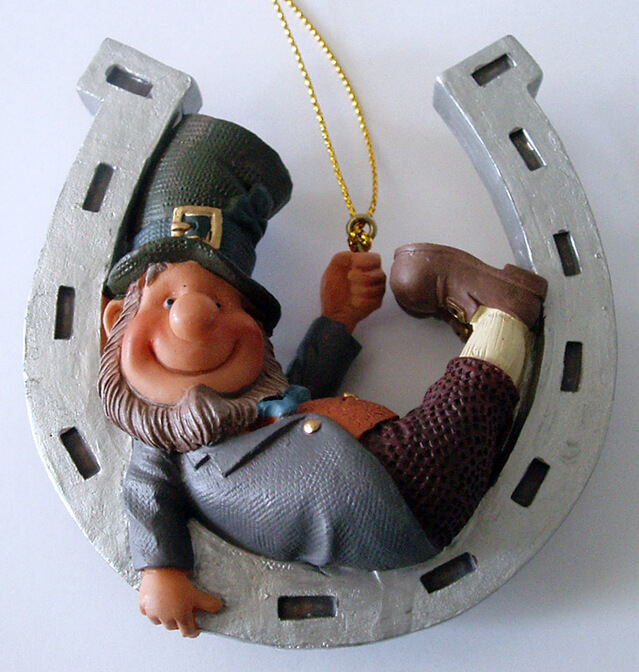
FreeImages.com/Chris Chidsey
TRUE!
The legend of the leprechauns dates back past the early medieval period in Ireland. Considered part of the fairy class (sometimes referred to as sprites), the leprechaun is indeed a part of Irish folklore. As the story goes, the leipreachán is a solitary creature of small stature that spends his time mending shoes and who retains a healthy dose of mischief and good-natured practical jokes. The best perhaps is the rainbow and pot of gold. As legend goes, the leprechaun’s secret hiding place for a substantial stash of gold is at the end of a rainbow. This is a half-truth, however, as rainbows are round (not halved). The image of a half-rainbow is an optical illusion given that most people view it from the ground up. In fact a rainbow is a circle, which has no “end,” and thus impossible to hide a pot of gold (implying therefore, there is no gold to begin with). The leprechaun takes great pleasure in frustrating the person in search of the gold.
The modern image of the leprechaun has been revised. Today we see a stout, green-clad red-bearded hearty little man with green top hat and buckles. The original stories instead had the leprechaun clad in a red coat and pointed hat, glasses and usually bent over a shoe he’s fixing. Whichever leprechaun you get, you can bet he’s mischievous!
GUINNESS: The national drink of Ireland is a pint of perfectly poured, creamy goodness that is Guinness.
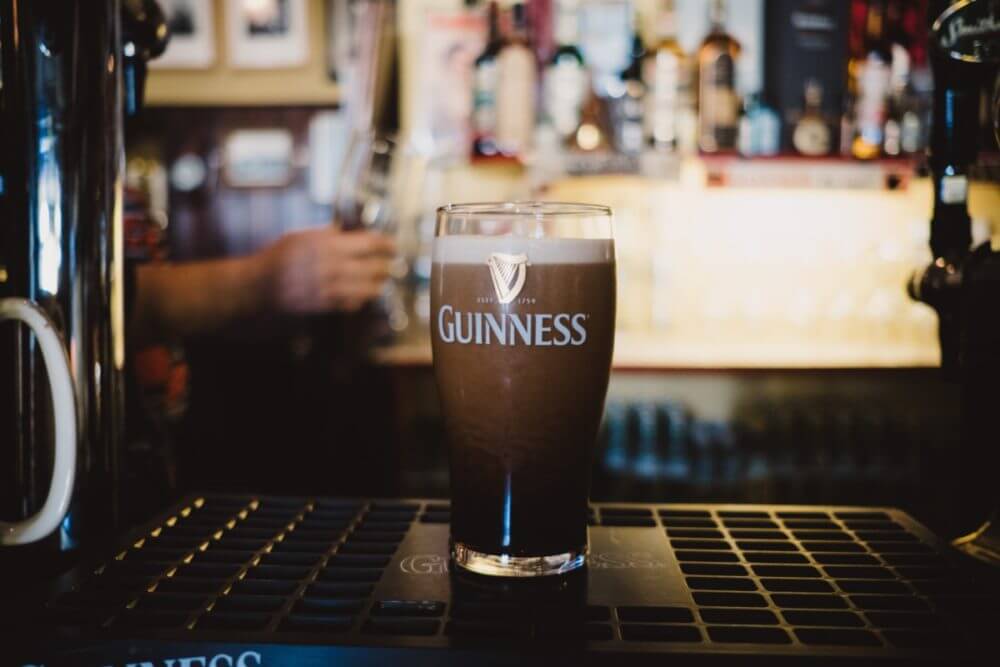
Awake and Dreaming Photography
FALSE
Although Guinness is probably the most recognizable drink associated with Ireland, the national drink is actually whiskey! Currently there are 12 distilleries in Ireland producing Irish whiskey. To be considered “Irish whiskey,” the whiskey must be distilled and aged in Ireland, from a yeast-fermented mash of cereal grain (and not diluted with other flavors), and aged at least 3 years in a wooden casks. Irish whiskey is usually distilled twice (to compare to Scotch which is distilled three times) and usually not malted with peat (as Scotch is), providing a less smoky aroma and flavor to the whiskey. The Irish have been making whiskey since 1000 AD, by 1400’s having developed a very drinkable product with good reputation throughout western Europe. The majority of Ireland’s distilleries run from the south along the eastern side of the island up to the north, and they can all be visited. Many distilleries put out limited edition batches that you can taste and buy to take home (not sold outside of Ireland).
Poitín (pronounced “poh-teen”) is a cousin of whiskey, a sort of “moonshine” made from malted barley, grain, treacle, sugar and/or potatoes. It’s a clear distilled spirit named after the copper pot in which its made (“pot” in Gaelic is “pota”). It was the most common alcohol produced in rural Ireland for many hundreds of years, but the 20th century saw a preference for whiskey.
It remains the second most popular drink in Ireland and is still made at home by Irish households today. You can even find some at the local pubs or on the person. (When we set off for our tour at the Gap of Dunloe, one of our guides offered me a swig of his flask of poitín to warm up with!).
Finally, solidly in the third spot is beer. Although stout is most preferred (that’d be a Guinness), the Irish began beer production in Ireland originally with ales. Hops are not native to Ireland (they had to import them from England in the 18th century), so ales and stouts were the common Irish beer. Guinness was introduced in 1759, and has enjoyed success in Ireland and around the world. But by decided victory, whiskey remains the top consumed alcohol in Ireland and is considered the true national spirit. If you want to be really authentic, then serve the whiskey in a Waterford crystal tumbler!
THE EMERALD ISLE: Ireland got its nickname “The Emerald Isle” because there are many emeralds were found on the island at one point.
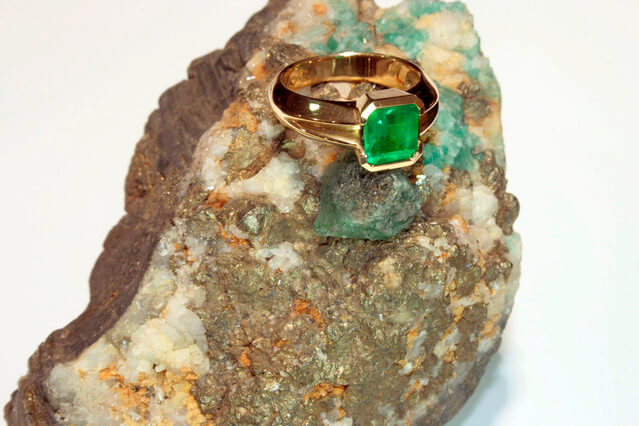
FreeImages.com/Jaime Abello
FALSE
In fact, there are no natural emeralds mined on any part of Ireland. The island got its famous nickname, “The Emerald Isle,” from how abundantly green it is. Pastures of green hills to the rocky cliffs at the coastline, heavily forested inland and rocks of streams and rivers covered in bright green moss, the overwhelming color of Ireland is undoubtedly green.
The official gemstone of Ireland is actually Connemara marble. Named after the region of Connemara, this vividly green variety of natural marble is found in abundance here. Connemara marble has been quarried for millennia, used by the ancient Celts mostly in jewelry and household items like drinking goblets and decorations, and traded with neighboring tribes. The marble itself is very interesting, harboring many shades of green from deep, almost black to pale greens that are almost white, being aptly described as having “forty shades of green.” When looking at the marble it’s interesting to see the movement of swirls and shapes; it seems to mimic Connemara itself, the rolling waves crashing on the coast and windswept hills of the mountains.
GREEN: The national color of Ireland is green.
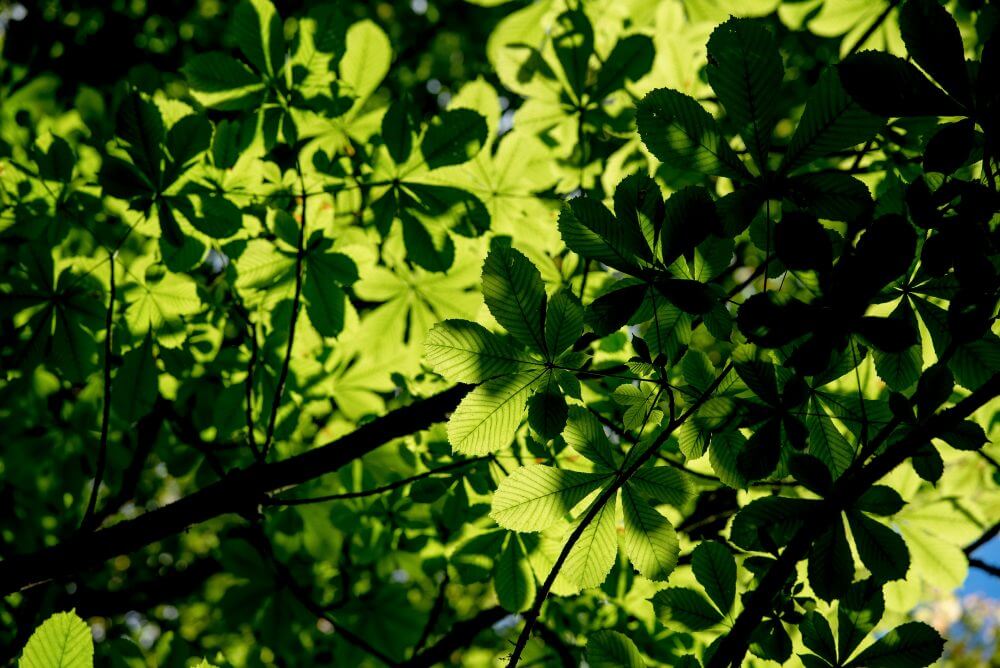
Shane O’Neill, Aspect Photography
TRUE & FALSE
Trick question. Sorry, couldn’t resist!
Green is most definitely considered a national color of Ireland. In the tricolor flag, green represents Irish Republicanism, to be specific, dating back to the 1790s. The orange represents the minority people associated with the Orange Order (a Protestant group in Ireland in the late 1790s that supported Dutch-born King William who defeated the army of Catholic King James II at the Battle of the Boyne in 1690). The white in the middle represents the truce between the two, and a desire to have Ireland based as a republic, not on religion or political affiliations. Later in the 18th century green was used as a symbol of freedom. Further, as per its nickname, Ireland’s undoubted color in form of natural beauty is most certainly green. So green can be said to be the official color of Ireland with strong support.
However, prior to the adoption of the current flag above in 1937, the official flag of Ireland was in fact, blue. In 1542, English king Henry VIII declared Ireland as a kingdom, himself king of it, and the flag to represent it as a golden harp on a blue field. This version would later be adopted as the official presidential emblem of Ireland in 1945, and is still in use today. The Order of St Patrick also has chosen it’s color to be blue (“St. Patrick’s blue” to be exact), which is a lighter version of blue (closer to a sky blue hue). The color of the carpet in the Dail — the Irish seat of government — is also, blue.
The answer is there is no “official” color of Ireland. Although blue has been the historic flag for Ireland until relatively recently, the color green has its political and colloquial arguments as well. The answer is “both” and “neither,” but for most people, even the Irish, I think green is a safe answer.
THE SHAMROCK: The national emblem of Ireland is the shamrock.
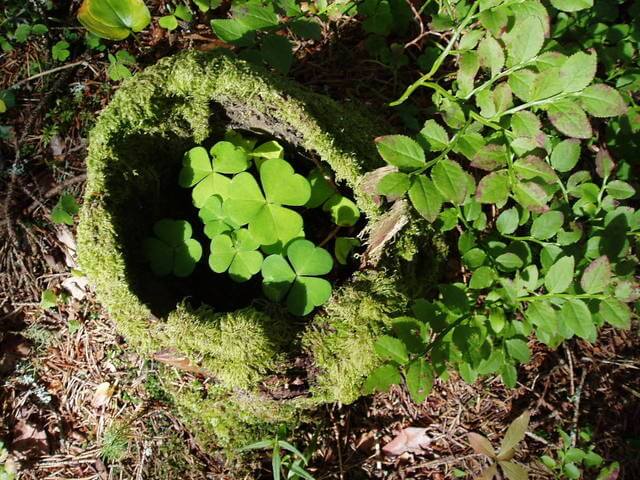
FreeImages.com/Ann- Kathrin Rehse
FALSE
Nope, not even close. It’s the harp. A symbol long-standing to represent Ireland is also it’s official national instrument. The Irish harp or Celtic harp is in triangular form with metal strings dates back over 1000 years to Celtic Ireland. The Scottish have their version — extremely similar — the Celtic one bearing using native wood for the construction and decoration being of decidedly Irish Celtic motifs (i.e. Celtic knots, etc.).
The “Brian Boru Harp” as it’s commonly referred is a 14th or 15th century is an Irish harp with metal strings. It serves as the base for the national flag, currency, as well as the Guinness emblem. The symbol is sometimes depicted as a bare-breasted woman, much like a figure head of a ship. This was popular during the medieval period but has since been removed in more modern times. You can see the Brian Boru Harp today on display at Trinity College.
Ancient Irish people were well skilled in the art of harp, both in the making and playing of the instrument. They earned a reputation for being the best throughout medieval Europe, many seeking out their skill to build and musicians to play. The harp did decline in popularity as costs to produce and own sky-rocketed during the 18th and 19th centuries. Today interest in the harp has been renewed, both as performers and students learning to play.
Although the shamrock is a symbol associated with Ireland via St Patrick, and other symbols like the Claddagh or Celtic knot are associated with Irish culture, the harp itself remains the official national symbol of Ireland.
How did you do on the quiz?! Did you get most of them right? Have fun sharing with your friends and prepping your guests for your upcoming destination wedding in Ireland. And have a pint with us as we (solemnly) celebrate St Patrick’s Day in a few weeks! Slainte!
comments +